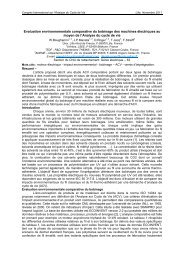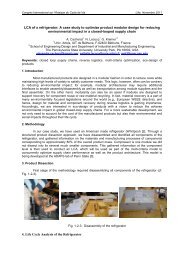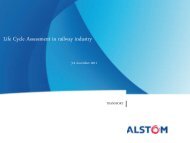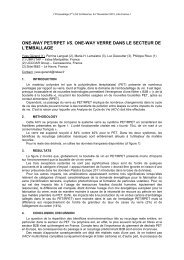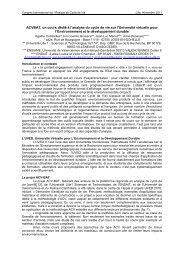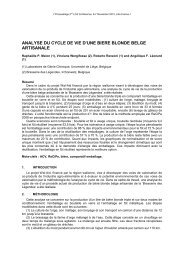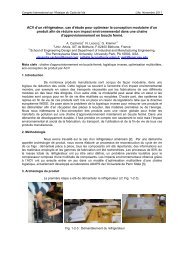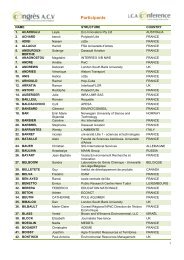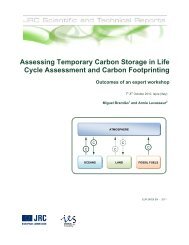Untitled - avniR
Untitled - avniR
Untitled - avniR
You also want an ePaper? Increase the reach of your titles
YUMPU automatically turns print PDFs into web optimized ePapers that Google loves.
Congrès International sur l’Analyse du Cycle de Vie Lille, Novembre 2011<br />
LCA : a tool to eco-design in textile industry<br />
Sandrine Pesnel 1 , Anne Perwuelz 1,2<br />
1 ENSAIT, GEMTEX, F-59056 Roubaix, France<br />
2 Univ Lille Nord de France, F-59000 Lille, France<br />
sandrine.pesnel@ensait.fr ; anne.perwuelz@ensait.fr<br />
Keywords: life cycle assessment, textile, production, recycling, lifetime<br />
Introduction<br />
The purpose of this study is to present several options to eco-design a bed-sheet. These studies<br />
were realised as part of the ACVTEX project (Interreg IV; France – Belgium) and focused on three stages<br />
of the life cycle of the bed-sheets: choice of the raw materials, production of the item and end of life.<br />
Materials and methods<br />
- Life cycle assessment<br />
The life cycle assessments are realized thanks to the software GaBi 4 (software and database for<br />
Life Cycle Engineering, PE INTERNATIONAL AG, Stuttgart). The data come from the GaBi software<br />
database in general. However, for the textile processes, such as the cotton cultivation, the production<br />
(weaving, easy-care treatment…) and the use of the bed-sheets, specific sources are used [1, 3]. The<br />
CML 2001 method (updated in November 09) is used to calculate the environmental impacts.<br />
- Influence of raw material and production phase – influence of lifetime<br />
Two bed-sheets are compared to study the influence of raw material: a 100% cotton bed-sheet<br />
(n°1) and a bed-sheet of 50% cotton and 50% polyester (n°2). The influence of the production is also<br />
studied through the application of an easy-care treatment (which facilitates the care of textiles). An<br />
untreated bed-sheet (n°3) is compared with an easy-care treated bed-sheet (n°4). These choices (for the<br />
raw material and the production) affect the quality of textiles and thus their lifetime. So this parameter is<br />
evaluated from abrasion tests. For both studies, the functional unit is “use and wash a bed-sheet for a<br />
year” (size of sheets: 240 x 300 cm). The system boundaries included the production of the raw material,<br />
the production of the bed-sheet and the use.<br />
- Influence of the end-of-life<br />
To study the influence of the end-of-life, three possibilities are compared for a post-consumer bedsheet:<br />
the mechanical recycling (production of a nonwoven thermal insulation for building sector, this<br />
textile nonwoven replaces classic insulation which is glass wool), the energy recovery approach and the<br />
landfill. The functional unit is “the treatment of a post-consumer 100% cotton bed-sheet”. The system<br />
boundaries are the treatment of the bed-sheet. The item is studied with the system expansion method to<br />
avoid allocation.<br />
Results<br />
- Raw material and production<br />
The results show that the cotton/polyester bed-sheet is less impacting than the cotton bed-sheet.<br />
Moreover, the easy-care treated bed-sheet is less impacting than the untreated one (cf. FIG. 1).<br />
- 85 -



